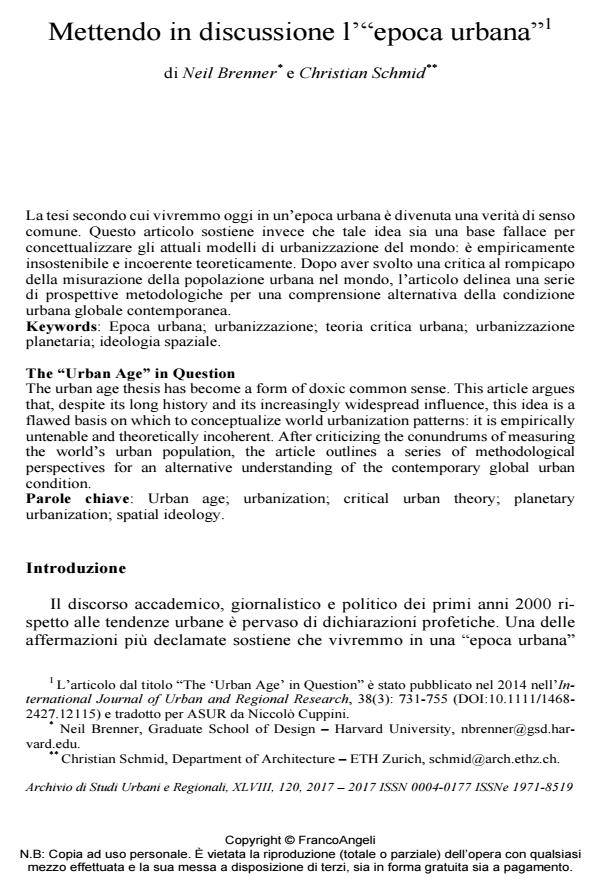Mettendo in discussione l’"epoca urbana"
Titolo Rivista ARCHIVIO DI STUDI URBANI E REGIONALI
Autori/Curatori Neil Brenner, Christian Schmid
Anno di pubblicazione 2017 Fascicolo 2017/120
Lingua Italiano Numero pagine 36 P. 13-48 Dimensione file 821 KB
DOI 10.3280/ASUR2017-120002
Il DOI è il codice a barre della proprietà intellettuale: per saperne di più
clicca qui
Qui sotto puoi vedere in anteprima la prima pagina di questo articolo.
Se questo articolo ti interessa, lo puoi acquistare (e scaricare in formato pdf) seguendo le facili indicazioni per acquistare il download credit. Acquista Download Credits per scaricare questo Articolo in formato PDF

FrancoAngeli è membro della Publishers International Linking Association, Inc (PILA)associazione indipendente e non profit per facilitare (attraverso i servizi tecnologici implementati da CrossRef.org) l’accesso degli studiosi ai contenuti digitali nelle pubblicazioni professionali e scientifiche
La tesi secondo cui vivremmo oggi in un’epoca urbana è divenuta una verità di senso comune. Questo articolo sostiene invece che tale idea sia una base fallace per concettualizzare gli attuali modelli di urbanizzazione del mondo: è empiricamente insostenibile e incoerente teoreticamente. Dopo aver svolto una critica al rompicapo della misurazione della popolazione urbana nel mondo, l’articolo delinea una serie di prospettive metodologiche per una comprensione alternativa della condizione urbana globale contemporanea.
Parole chiave:Epoca urbana; urbanizzazione; teoria critica urbana; urbanizzazione planetaria; ideologia spaziale.
Neil Brenner, Christian Schmid, Mettendo in discussione l’"epoca urbana" in "ARCHIVIO DI STUDI URBANI E REGIONALI" 120/2017, pp 13-48, DOI: 10.3280/ASUR2017-120002